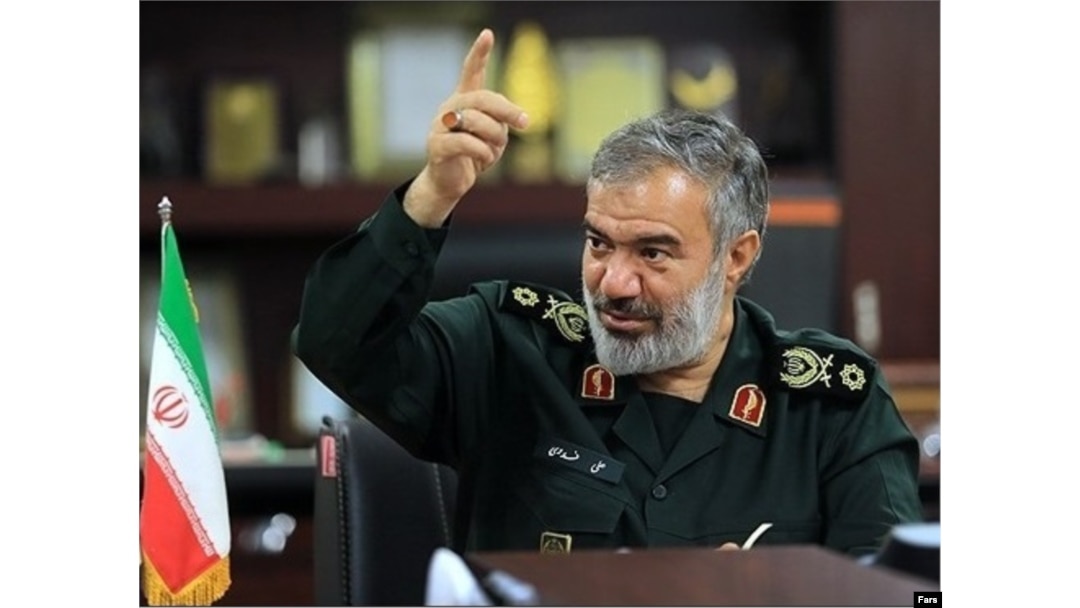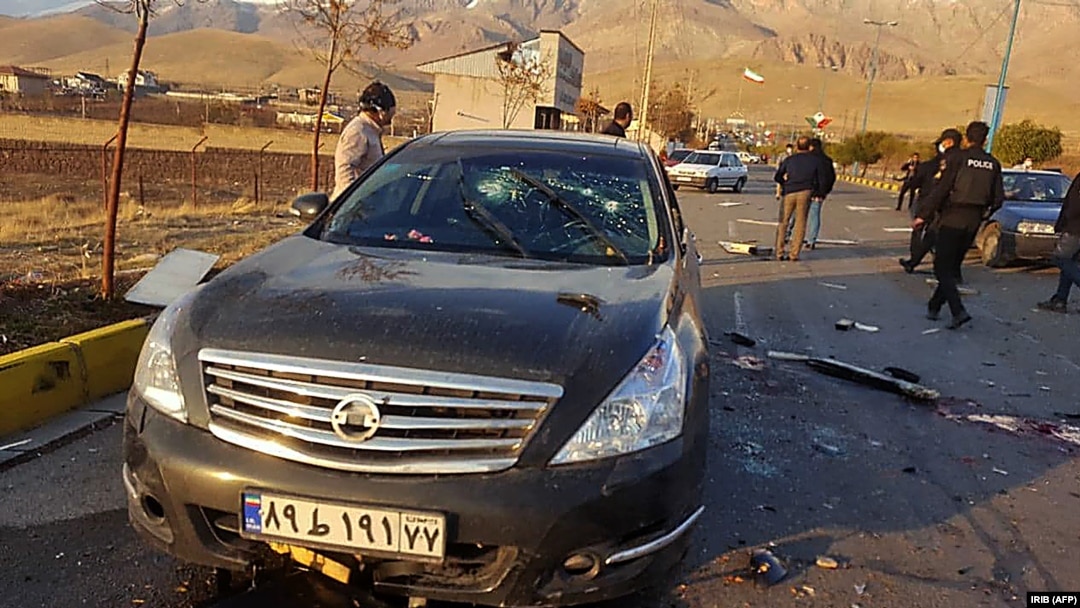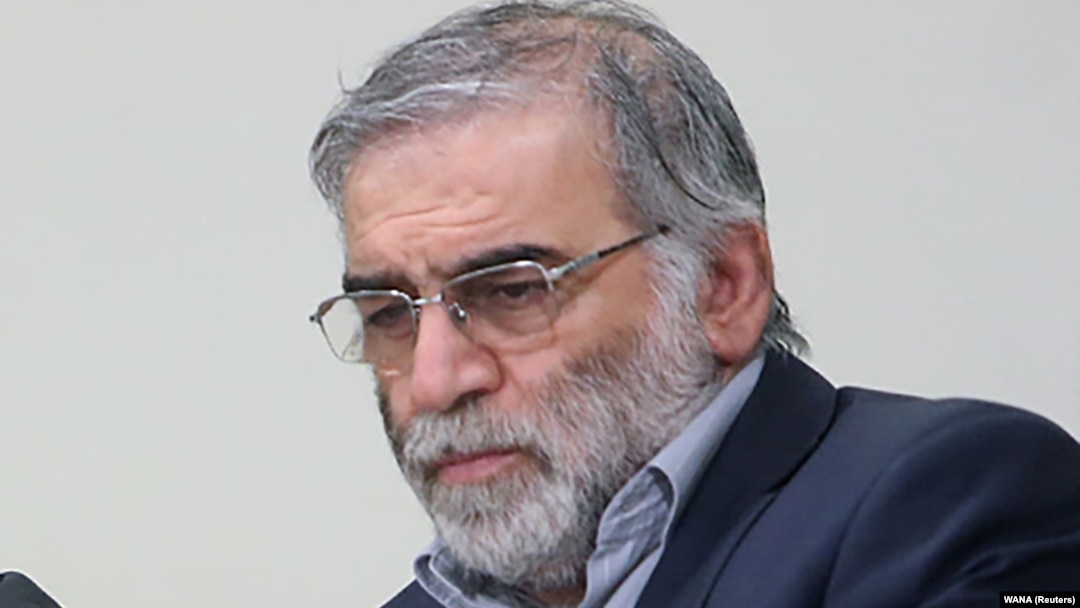A machine gun equipped with a "satellite-controlled smart system" was used to kill Iran's top nuclear scientist, a senior official with the country's Islamic Revolutionary Guards Corps (IRGC) has said.
Officials have blamed Israel for the brazen, daytime attack on November 27 in Absard, some 60 kilometers from the capital, Tehran, though it didn't offer any evidence for the claim.
Israel, which has been blamed for the assassination of at least four other Iranian nuclear scientists, has not commented on the attack.
The Black List: Assassinated Iranian Scientists
Speaking in Tehran on December 6, IRGC Deputy Commander Ali Fadavi said the smart system had "zoomed in" on Fakhrizadeh's face using "artificial intelligence" while adding that Fakhrizadeh's wife -- who was only "25 centimeters away" -- was unharmed.
Fadavi confirmed earlier reports that there were no assassins on the ground to carry out the killing.
He said the special weapon fired a total of 13 times, hitting Fakhrizadeh four or five times, including a shot to his spinal cord that caused severe bleeding and led to his death as he was being transported via helicopter to a Tehran hospital.

IRGC Deputy Commander Ali Fadavi (file photo)
Four bullets also hit the chief of Fakhrizadeh's security detail, who had attempted to protect him by "throwing himself" on the nuclear scientist, Fadavi said. That confirmed media reports that one of Fakhrizadeh's bodyguards had been injured in the attack.
He also said that 11 bodyguards were accompanying Fakhrizadeh and that the explosion of a truck during the attack targeted the security team.
Fadavi's account is the latest version of the assassination that has resulted in serious criticism of Iran's security apparatus.
Initial reports immediately after the killing suggested that the scientist was targeted in a suicide attack, which included several gunmen. But media later only reported that the assault included gunfire and a truck explosion.
A filmmaker close to the hard-line faction of Iran's establishment, which also includes the IRGC and other groups, said hours after the attack that 12 gunmen, including two snipers and a powerful car bomb, were involved in the ambush of Fakhrizadeh's four-vehicle convoy.
Later, the IRGC-affiliated Fars news agency reported that there were no hitmen on the ground and that the attack was carried out by a remote-controlled machine gun mounted on a pickup truck that later exploded.
Supreme National Security Council Secretary Ali Shamkhani had also said there were no attackers on the ground while blaming Israel and suggesting the exiled Iranian opposition group Mujahedin-e Khalq Organzation had played a role.
In an interview with state-controlled television, one of Fakhrizadeh's sons, Hamed Fakhrizadeh, said his father had been warned by his security team on the day he was assassinated not to travel.
But the top scientist, who kept a low-profile, had said that, due to a class he was teaching as well as an "important meeting," he needed to return to Tehran.
'Full-Blown War Zone'
Hamed Fakhrizadeh described the scene of the assassination, which he came to shortly after the attack, as a "full-blown war zone."
His brother, Mehdi Fakhirzadeh, said in the same interview that his father was shot at a close range of four or five meters and that their mother, who he said had sat on the ground next to Fakhrizadeh, was unhurt.
"She said 'I don't understand how the bullets didn't hit me. I went there so that the bullets would not hit [Fakhrizadeh],'" he quoted his mother as having said.
The comments could either confirm Fadavi's account regarding a "satellite-controlled" weapon equipped with facial-recognition technology or suggest that snipers shot and killed the nuclear scientist.
Fakhrizadeh's assassination and the various accounts of how it was carried out have raised many questions, including the possible presence of "infiltrators" within Iran's security apparatus who would have precise information about the movement of the country's leading nuclear scientist, who was mentioned by name in a 2018 presentation by Israeli Prime Minister Benjamin Netanyahu.
If the official account regarding the remote-controlled killing is true, it is clear that the attack was well-planned and that someone had installed the alleged "remote-controlled" gun and a bomb on the truck before driving it to the site of the assassination. Some reports said the owner of the Nissan pickup truck had left Iran shortly before the attack.
One major question is how the special equipment needed for the sophisticated attack was smuggled into Iran.
Mohsen Fakhrizadeh
It is also not clear why Fakhrizadeh -- who knew that he was a wanted man due to his role in the country's nuclear program and who, according to officials, had survived previous failed assassination attempts -- had decided to get out of his vehicle during the attack. It's especially strange because several media accounts say his vehicle was bullet-proof.
Fakhrizadeh's sons confirmed earlier reports that their father left his vehicle because he thought it had broken down after hearing the bullets hitting the car.
But it is unclear why he didn't ask someone on his security team to find out what was happening instead of putting himself at risk by leaving the vehicle.
Officials have vowed to avenge Fakhrizadevh's killing, which came nearly a year after the U.S. assassination of General Qasem Soleimani, who led the IRGC Quds Force in charge of the group's regional activities. Soleimani was killed in a drone attack near Baghdad in January in an attack that the U.S. claimed responsibility for.



